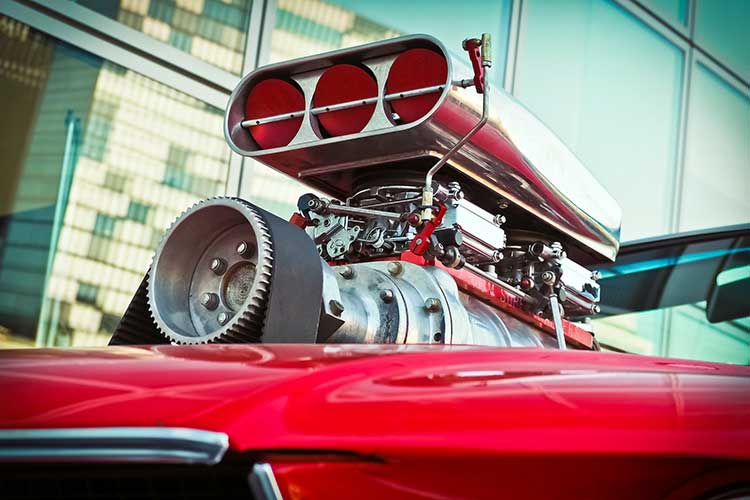Luke's Car Tips & Auto Maintenance Advice
Luke's posts regular blogs to offer you great information and advice about your car maintenance. Check back often for new posts. Search for a specific topic!
 Luke Shaff
Luke Shaff
A single Top Fuel dragster, equipped with a 500 cubic-inch Hemi engine, generates more horsepower (11,000 HP) than the first 5 rows at the Daytona 500.
When operating at maximum throttle, a dragster engine consumes 1.2-1.5 gallons of nitromethane per second. Interestingly, a fully loaded 747 aircraft consumes jet fuel at the same rate while producing 25% less energy.
The power produced by a stock Dodge Hemi V8 engine is insufficient to drive the dragster's supercharger.
The supercharger forcefully compresses the fuel mixture into a nearly solid state before ignition, with 3000 CFM of air being rammed in during overdrive. At full throttle, the cylinders operate on the brink of hydraulic lock.
At the stoichiometric 1.7:1 air/fuel mixture for nitromethane, the flame front temperature reaches 7050 degrees F.
The burning of nitromethane produces a yellow flame, while the dazzling white flame observed above the stacks at night is raw burning hydrogen. This hydrogen is separated from atmospheric water vapor by the scorching exhaust gases.
Each spark plug receives a substantial 44 amps of power from dual magnetos. This output is equivalent to that of an arc welder in every cylinder.
Spark plug electrodes are completely consumed during a single pass. By the halfway point, the engine experiences diesel-like combustion due to compression and the glowing exhaust valves, reaching temperatures of 1400 degrees F. To stop the engine, the fuel flow must be abruptly cut off.
If there is a momentary spark failure early in the run, unburned nitro accumulates in the affected cylinders. The subsequent explosion can be powerful enough to shatter cylinder heads or split the engine block in half.
Dragsters surpass speeds of 300 MPH before you can finish reading this sentence.
To exceed 300 MPH in just 4.5 seconds, dragsters must endure an average acceleration of over 4 G's. In order to reach 200 MPH well before reaching the halfway mark, the initial acceleration approaches a staggering 8 G's.
Top Fuel engines complete approximately 540 revolutions from the moment the light turns green to the finish line!
Including the burnout, the engine only has to endure 900 revolutions under load.
The redline of the engine is remarkably high, at 9500 RPM.
THE BOTTOM LINE: Assuming all the equipment is fully paid off and the crew worked without compensation, and if, for once, NOTHING BLOWS UP, each run costs an estimated $1,000 per second.
The dragster achieves 0 to 100 MPH in just 0.8 seconds, covering the first 60 feet of the run.
It reaches 0 to 200 MPH in 2.2 seconds, spanning the first 350 feet of the run.
At the starting line, the acceleration exerts 6 g-forces, making it the fastest accelerating land vehicle.
Upon the deployment of twin chutes at 300 MPH, the dragster experiences 6 negative g-forces.
An NHRA Top Fuel Dragster accelerates faster than any other land vehicle on Earth, surpassing even a jet fighter plane or the space shuttle.